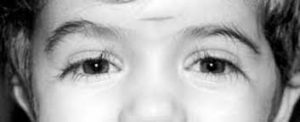 Cohen syndrome (also known as Pepper syndrome or Cervenka syndrome) is a very rare autosomal recessive genetic disorder with varied expression, characterised by obesity, intellectual disability, distinct craniofacial abnormalities and potential ocular dysfunction.
Cohen syndrome (also known as Pepper syndrome or Cervenka syndrome) is a very rare autosomal recessive genetic disorder with varied expression, characterised by obesity, intellectual disability, distinct craniofacial abnormalities and potential ocular dysfunction.
Patients with Cohen syndrome very frequently exhibit abnormal eyelash and eyelid morphology, teeth abnormalities, lingual aplasia or hypoplasia, arachnodactyly, chorioretinal dystrophy, downslanted palpebral fissures, gingival overgrowth, global developmental delay, a high and narrow palate, maxillary hypoplasia, zygomatic bone hypoplasia, hypotonia, intellectual disability, long eyelashes, low anterior hairline, microcephaly, micrognathia, myopia, neurological speech impairment, neutropenia, open mouth, prominent nasal bridge, sandal gap, short philtrum, slender toes, tapered fingers, and thick eyebrows.
Other frequently observed symptoms include abnormal skin pigmentation, cat cry, clinodactyly, cubitus valgus, decreased fetal movement, delayed puberty, failure to thrive during infancy, feeding difficulties during infancy, syndactyly, genu valgum, intrauterine growth retardation, joint hyperflexibility, macrodontia, narrow palm, obesity, short stature, thick hair, and a weak cry.
This syndrome is caused by pathogenic mutations in the VPS13B gene at chromosomal locus 8q22, and an autosomal recessive transmission with variable expression.
Cohen syndrome is diagnosed by clinical examination but often has variation in expression.
Ocular complications, though rare, are listed as optic atrophy, microphthalmia, pigmentary chorioretinitis, hemeralopia, myopia, strabismus, nystagmus and iris/retinal coloboma.
General appearance is obesity with thin/elongated arms and legs. micrognathia, short philtrum and high vaulted palate are common.
Variable intellectual disability with occasional seizure and deafness also is characteristic.
Patients may benefit from early exposure to speech, physical, and occupational therapy to correct symptoms such as joint overflexibility, developmental delays, hypotonia, and motor clumsiness.
Diagnosis may potentially be delayed due to the lack of a definitive molecular test and its clinical variability.
Glasses are beneficial to those who have severe nearsightedness.
Younger patients start out having unimpaired vision, but it starts to deteriorate at a young age.
If vision is able to improve with the use of glasses, they should be worn to help facilitate concept development. Retinal degeneration cannot be ameliorated with glasses.[11]
Many people who have Cohen syndrome also have neutropenia.
Granulocyte-colony stimulating factor (G-CSF) is one possible treatment for neutropenia.
There are no known cures for the disease.
Over the past several years, there have been approximately 50 new cases worldwide.
